- Choosing the Right Onion Varieties
- 1. Long-day onions
- 2. Short-day onions
- 3. Intermediate-day onions
- 4. Storage onions
- Preparing the Soil for Planting
- 1. Choose the Right Location
- 2. Clear the Area
- 3. Test the Soil
- 4. Add Organic Matter
- 5. Provide Nutrients
- 6. Break up Clumps
- 7. Create Raised Beds
- 8. Level the Soil
- 9. Avoid Overwatering
- Planting Onions: Best Practices
- 1. Choose the right time
- 2. Prepare the soil
- 3. Select high-quality onion sets or seeds
- 4. Plant in rows or beds
- 5. Plant at the right depth
- 6. Provide adequate water
- 7. Mulch the planting area
- 8. Fertilize appropriately
- 9. Control weeds
- 10. Watch for pests and diseases
- 11. Harvest at the right time
- 12. Proper storage
- 13. Rotate your crops
- 14. Keep records and learn from experience
- Watering and Fertilizing Onions
- Watering Onions
- Fertilizing Onions
- Controlling Weeds and Pests
- Weed Control
- Pest Control
- Monitoring and Maintenance
- Protecting Onions from Cold Weather
- 1. Choose the right onion varieties
- 2. Provide ample insulation
- 3. Use row covers or cloches
- 4. Water carefully
- 5. Monitor weather conditions
- 6. Harvest before the first frost
- Harvesting and Storing Onions
- When to Harvest Onions
- How to Harvest Onions
- Storing Onions
- Common Onion Planting Mistakes to Avoid
- “Question-Answer”
- When is the best time to plant onions in the spring?
- What kind of soil do onions prefer?
- Should I start onions from seeds or sets?
- How deep should I plant onion sets?
- How often should I water onions after planting?
- Do onions require fertilization?
- How do I know when onions are ready to be harvested?
- “Video” The 2 Most Important Tips for Growing Big Onions
Spring is the perfect time to start planting onions in your garden. These versatile and flavorful vegetables are a staple in many delicious recipes and can add a burst of flavor to any dish. Whether you are a seasoned gardener or a beginner, these essential tips and care guide will help you successfully grow onions and enjoy a bountiful harvest this season.
Choose the Right Onion Variety: There are many different varieties of onions to choose from, including red, yellow, and white onions. Each variety has its own unique flavor profile, so make sure to select the one that suits your taste preferences. Additionally, consider whether you want to grow onions from sets, transplants, or seeds. Sets are small onions that have been grown the previous year and are the easiest option for beginners.
Prepare the Soil: Onions prefer well-drained soil that is rich in organic matter. Before planting, prepare the soil by removing any weeds and adding compost or well-rotted manure. Onions also prefer a slightly acidic soil with a pH level between 6.0 and 7.0. Test the soil pH and adjust it if necessary using lime or sulfur.
Planting and Spacing: Plant onion sets or transplants about 1 inch deep and 4-6 inches apart. If you are planting from seeds, sow them about 1/4 inch deep and thin the seedlings to 4-6 inches apart when they are around 4 inches tall. Make sure to give onions enough space to grow, as crowding can lead to smaller bulbs.
Pro Tip: To maximize space in your garden, consider interplanting onions with other vegetables. They make great companions for carrots, lettuce, and peppers.
Watering and Fertilizing: Onions have shallow roots and require consistent moisture to grow properly. Water the onions deeply once a week, making sure to keep the soil consistently moist but not waterlogged. Additionally, fertilize the onions every 4-6 weeks with a balanced fertilizer to provide them with the necessary nutrients.
Managing Pests and Diseases: Onions are relatively low-maintenance, but they can be susceptible to pest infestations and diseases such as onion thrips, onion maggots, and downy mildew. To prevent these issues, keep the garden clean, remove any weeds or debris, and monitor the plants regularly. If pest or disease problems arise, consider using organic pest control methods or consult a local gardening expert for advice.
By following these essential tips and care guide, you can ensure a successful spring planting of onions and enjoy the rewarding experience of harvesting your own fresh, flavorful onions from the garden. Start planting today and get ready to savor the taste of homegrown onions in your favorite dishes!
Choosing the Right Onion Varieties
Choosing the right onion varieties for your spring planting is essential to ensure a successful harvest. With so many different types of onions available, it can be overwhelming to decide which ones are best for your garden. Here are some factors to consider when choosing onion varieties:
1. Long-day onions
Long-day onions require around 14 to 16 hours of sunlight per day to form bulbs. These onions are best suited for northern regions with long daylight hours during the spring and summer months. Some popular long-day onion varieties include:
- Yellow Sweet Spanish: This variety produces large, sweet onions and is excellent for cooking and fresh eating.
- Walla Walla: Walla Walla onions are known for their mild flavor and are great for eating raw in salads and sandwiches.
2. Short-day onions
Short-day onions require around 10 to 12 hours of sunlight per day to develop bulbs. These onions are best suited for southern regions with shorter daylight hours. Some popular short-day onion varieties include:
- Texas 1015Y: This variety is known for its large size and sweet flavor, making it a popular choice for grilling and roasting.
- Vidalia: Vidalia onions have a mild and sweet taste, making them perfect for salads and sandwiches.
3. Intermediate-day onions
Intermediate-day onions require around 12 to 14 hours of sunlight per day to form bulbs. These onions are suitable for regions with moderate daylight hours. Some popular intermediate-day onion varieties include:
- Candy: Candy onions have a mild and slightly sweet flavor, making them a versatile choice for various culinary uses.
- Red Baron: This variety produces large, red onions that are perfect for adding color and flavor to salads and stir-fries.
4. Storage onions
If you’re looking to grow onions for long-term storage, choose varieties specifically bred for this purpose. These onions have thicker skins and a higher dry matter content, allowing them to be stored for several months. Some popular storage onion varieties include:
- Copra: Copra onions have a strong and pungent flavor that intensifies during storage, making them great for cooking.
- Stuttgarter: Stuttgarter onions are known for their excellent storage capabilities and are widely used in cooking.
When choosing onion varieties, consider your climate, daylight hours, and desired use. It’s also a good idea to experiment with different varieties to find the ones that perform best in your garden.
Preparing the Soil for Planting
Before planting your onions, it’s important to prepare the soil to create optimal growing conditions. Here are some essential tips for preparing the soil:
1. Choose the Right Location
Select a location that receives full sun, as onions require at least 6 hours of direct sunlight each day. Ensure the area has well-draining soil to avoid waterlogged conditions which can lead to root rot.
2. Clear the Area
Remove any weeds, grass, or debris from the planting area. These can compete with the onions for nutrients and water. You can manually pull out the weeds or use a garden hoe to clear the area.
3. Test the Soil
Perform a soil test to determine its composition and pH level. Onions prefer slightly acidic soil with a pH range between 6.0 and 7.0. If the pH is too low or too high, you may need to amend the soil to adjust its pH level.
4. Add Organic Matter
Incorporate organic matter, such as compost or well-rotted manure, into the soil. This will improve its structure and fertility, ensuring a healthy growing environment for the onions. Spread a layer of organic matter over the planting area and mix it into the top few inches of soil using a garden fork or tiller.
5. Provide Nutrients
Onions are heavy feeders, so it’s important to provide them with ample nutrients. Before planting, apply a balanced fertilizer that is high in phosphorus and potassium to promote strong root growth and bulb development. Follow the manufacturer’s instructions for application rates.
6. Break up Clumps
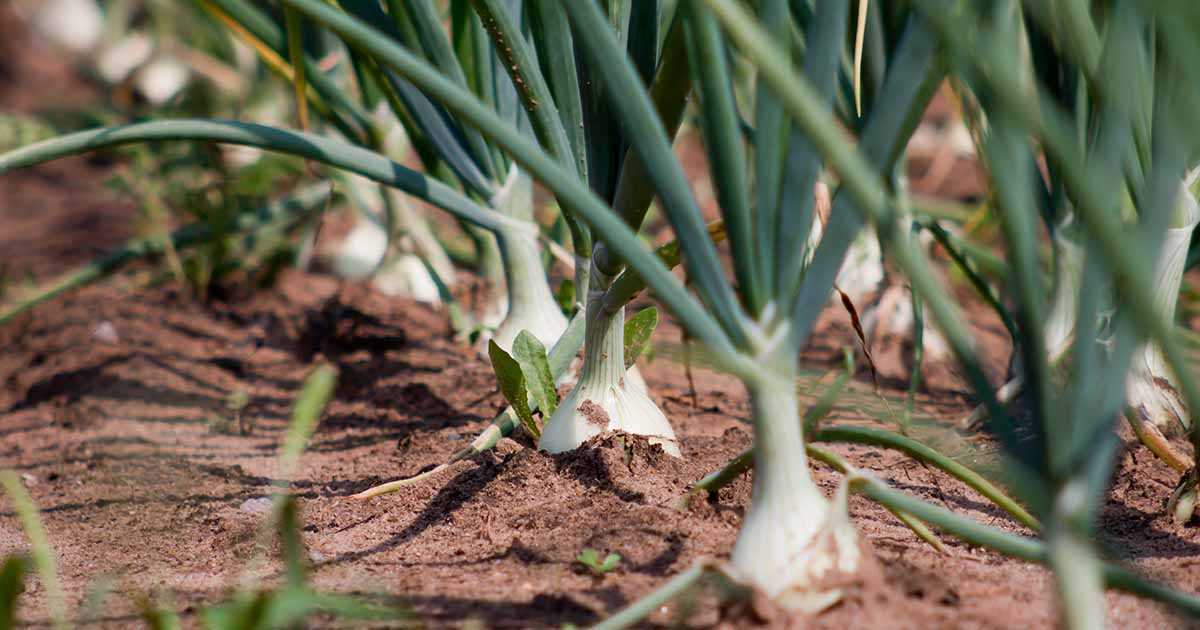
If the soil is compacted or contains large clumps, break them up with a garden fork or tiller. Loose, well-aerated soil allows the onions’ roots to penetrate easily and access water and nutrients.
7. Create Raised Beds
If your garden soil has poor drainage, consider creating raised beds for planting onions. Raised beds provide better drainage and prevent waterlogging, which is detrimental to onion growth.
8. Level the Soil
Ensure the soil surface is level and smooth before planting. This will help prevent water from pooling around the onions and reduce the risk of disease and rot.
9. Avoid Overwatering
Avoid overwatering the soil before planting as excess moisture can lead to rotting of onion sets or young transplants. The soil should be moist but not waterlogged.
By following these tips, you’ll be on your way to preparing the soil for planting onions. Remember to continue caring for the soil throughout the growing season by providing regular irrigation, weeding, and fertilization.
Planting Onions: Best Practices
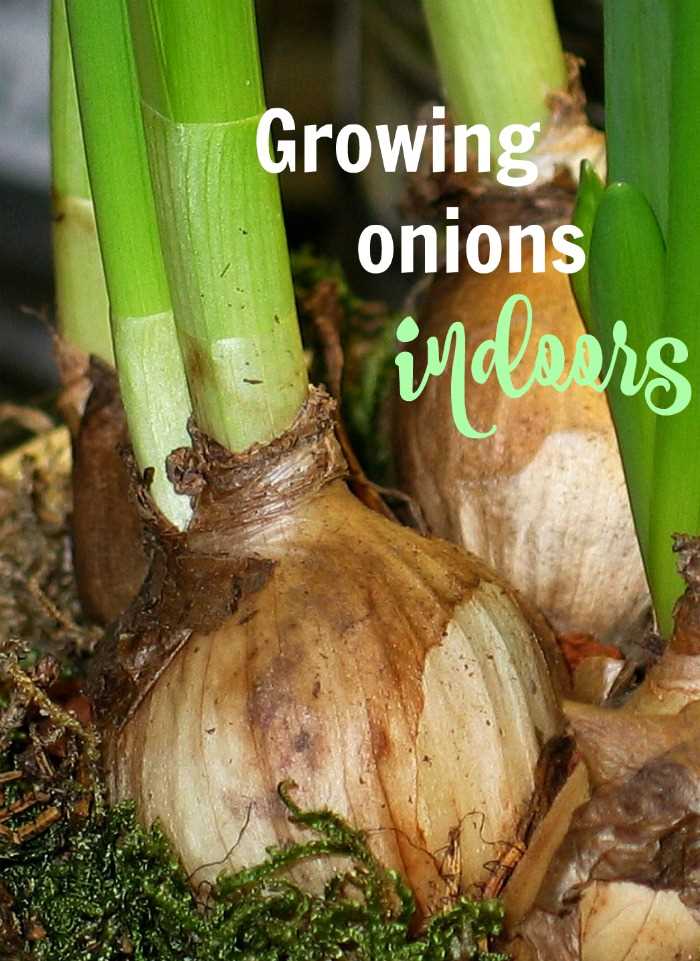
1. Choose the right time
Select the appropriate time to plant onions, typically in early spring or late summer. This allows the onions to establish their root system before the cold winter or hot summer months.
2. Prepare the soil

Ensure the soil is well-draining and loosened to a depth of at least 6 inches. Remove any weeds or debris from the planting area.
3. Select high-quality onion sets or seeds
Choose healthy and disease-free onion sets or seeds from a reputable nursery or seed catalog. Look for firm, dormant sets or viable seeds for the best results.
4. Plant in rows or beds
Plant the onions in rows or raised beds for easier maintenance and harvesting. Space the sets or seeds according to the variety’s recommended spacing guidelines.
5. Plant at the right depth
Plant the onion sets or seeds at the appropriate depth, usually about 1 inch deep. Be sure to cover them with soil and gently firm it around them.
6. Provide adequate water
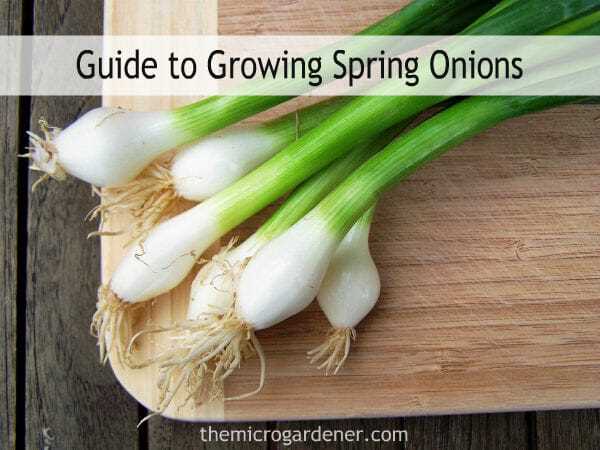
Water the onions regularly, especially during dry periods. Keep the soil consistently moist but not soaked to prevent rotting or diseases.
7. Mulch the planting area
Apply a layer of organic mulch, such as straw or shredded leaves, around the onion plants. This helps to retain moisture, control weeds, and regulate soil temperature.
8. Fertilize appropriately
Provide the onions with a balanced fertilizer or organic compost to ensure they receive the necessary nutrients for healthy growth. Follow the package instructions for application rates.
9. Control weeds
Regularly remove any weeds that compete with the onion plants for nutrients and water. Use hand-pulling or shallow cultivation to avoid damaging the onion roots.
10. Watch for pests and diseases
Monitor the onion plants for any signs of pests or diseases, such as aphids, onion maggots, or fungal infections. Take appropriate measures, such as applying insecticides or removing infected plants, to prevent further damage.
11. Harvest at the right time
Harvest the onions when the tops begin to yellow and fall over. Gently lift the onions from the soil and allow them to dry for a few days in a well-ventilated area before storing or using them.
12. Proper storage
Place the harvested onions in a cool, dry, and well-ventilated location to promote good storage. Avoid storing them near potatoes or fruits that produce ethylene gas, which can cause premature spoilage.
13. Rotate your crops
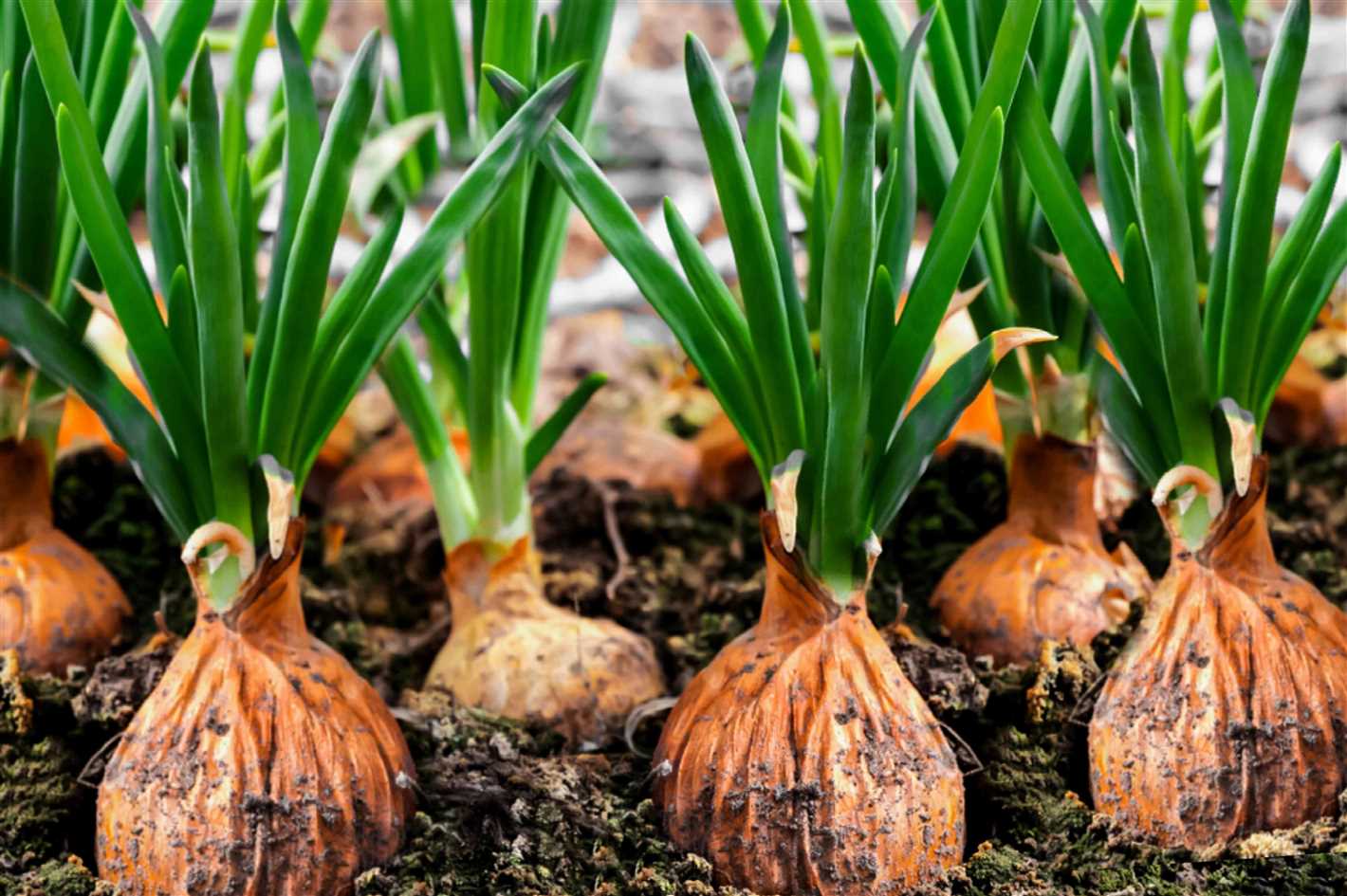
To prevent soil-borne diseases and maintain soil fertility, avoid planting onions in the same location year after year. Practice crop rotation by switching to a different area of the garden or bed each season.
14. Keep records and learn from experience
Keep a gardening journal or record of your onion planting experiences. Note the varieties, planting dates, weather conditions, and any successes or challenges you encountered. This information can help guide future planting decisions and improve your onion-growing skills.
Watering and Fertilizing Onions
Watering Onions
Water is essential for the growth and development of onions. Proper watering techniques can help ensure healthy plants and a bountiful harvest. Here are some important tips for watering onions:
- Onions need consistent moisture, especially during the early stages of growth. Keep the soil evenly moist, but not soggy.
- Water deeply and infrequently rather than shallowly and frequently. This encourages onion roots to grow deeper into the soil.
- Use a soaker hose or drip irrigation system to provide a slow, steady supply of water directly to the plant roots. This helps prevent water waste and reduces the risk of fungal diseases.
- Water onions in the morning so that the foliage has time to dry before evening. Wet foliage can lead to disease problems.
- Monitor soil moisture regularly by sticking your finger into the soil. If it feels dry 1 to 2 inches below the surface, it’s time to water. Avoid overwatering, as this can cause the onions to rot.
Fertilizing Onions
Onions have specific nutritional requirements, and providing them with the right balance of nutrients can result in healthier plants and larger bulbs. Here are some essential tips for fertilizing onions:
- Before planting onions, incorporate a well-balanced organic fertilizer into the soil. This will provide the plants with a slow-release source of nutrients.
- During the growing season, side-dress the onions with a nitrogen-rich fertilizer every 3-4 weeks. This will help promote leafy growth and bulb development.
- Avoid using excessive amounts of nitrogen, as this can lead to excessive leafy growth at the expense of bulb formation.
- Consider using a foliar fertilizer, which can be sprayed directly onto the onion foliage. This provides a quick source of nutrients that can be readily absorbed by the plants.
- Monitor the growth and appearance of the onion plants. If they appear pale or stunted, it may indicate a nutrient deficiency. Adjust the fertilizer application accordingly.
By providing proper watering and fertilization, you can help ensure the healthy growth and development of your onions, resulting in a successful harvest.
Controlling Weeds and Pests
When planting onions in the spring, it is important to take steps to control weeds and pests that can damage or inhibit the growth of your crop. Weeds can compete with onions for nutrients and water, while pests can eat or infest the plants, causing significant damage.
Weed Control
Here are some effective methods to control weeds in your onion garden:
- Mulching: Apply a layer of organic mulch, such as straw or wood chips, around your onion plants. This will smother weed growth and help retain soil moisture.
- Hand pulling: Regularly inspect your onion garden and manually remove any weeds that you find. Be sure to remove the entire weed, including the roots.
- Use of herbicides: If necessary, you can use herbicides specifically labeled for use on onions. Follow all instructions and safety precautions when using herbicides.
Pest Control
To protect your onions from pests, consider the following strategies:
- Companion planting: Plant onions alongside companion plants that repel pests, such as marigolds, garlic, or chives.
- Row covers: Use row covers to physically exclude pests from your onion plants. This can be especially effective against insects like onion thrips.
- Biological controls: Introduce beneficial insects, such as ladybugs or parasitic wasps, that prey on pests like aphids or caterpillars.
- Organic pest control: Use organic pest control methods, such as insecticidal soaps or neem oil sprays, to target specific pests.
Monitoring and Maintenance
Regularly monitor your onion plants for signs of weed infestation or pest damage. Early detection can help you take appropriate action to control the problem. Maintain a healthy garden environment by watering and fertilizing your onions properly, as stressed plants are more susceptible to weed competition and pest attacks.
By implementing these weed and pest control measures, you can ensure that your spring-planted onions have the best chance of thriving and producing a bountiful harvest.
Protecting Onions from Cold Weather
While onions are a hardy vegetable and can tolerate cooler temperatures, they are still susceptible to damage from frost and extreme cold. Here are some essential tips for protecting your onions from cold weather:
1. Choose the right onion varieties
When planting onions, consider choosing varieties that are more cold-tolerant. Look for varieties that are specifically labeled as “winter-hardy” or “cold-resistant.” These varieties have been bred to withstand lower temperatures and are more likely to survive in colder climates.
2. Provide ample insulation
During periods of cold weather, it is important to provide insulation for your onion plants. Covering them with a layer of mulch or straw can help protect the roots and bulbs from freezing temperatures. This layer of insulation will help regulate the temperature around the plants and prevent damage caused by frost.
3. Use row covers or cloches
Row covers or cloches can provide an extra layer of protection for your onion plants. These covers create a mini greenhouse effect by trapping heat and protecting the plants from harsh weather conditions. Be sure to remove the covers during the day to allow access to sunlight and prevent overheating.
4. Water carefully
During cold weather, it is important to water your onion plants sparingly. Overwatering can lead to root rot and other diseases, especially when combined with colder temperatures. Instead, water the plants only when the soil is dry to the touch. Additionally, avoid watering in the evening to prevent excess moisture from freezing on the plants overnight.
5. Monitor weather conditions
Stay updated on the weather forecast and be prepared to take additional precautions if temperatures are expected to drop significantly. Consider using additional protective measures such as heat lamps or a cold frame to help maintain a more stable temperature around your onion plants.
6. Harvest before the first frost
If a frost or freeze is imminent, it is best to harvest your onions before the cold weather arrives. Onions that have been exposed to freezing temperatures may become soft, develop rot, or lose their flavor. Harvest the onions and store them in a cool, dry place until you are ready to use them.
By following these tips and providing proper care, you can protect your onions from cold weather and ensure a successful harvest.
Harvesting and Storing Onions
Harvesting onions at the right time is essential to ensure the best flavor and storage quality. Here are some tips and guidelines for harvesting and storing onions:
When to Harvest Onions
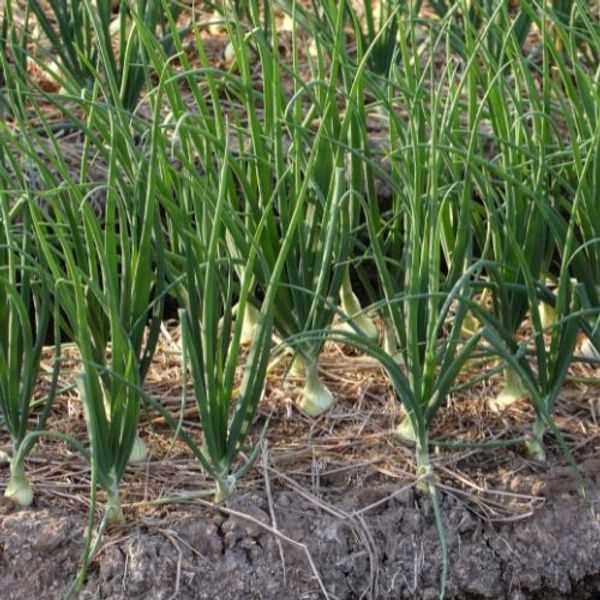
- Onions are ready to harvest when the tops start to fall over and dry out.
- The outer papery layer of the onion should be dry and crispy.
- For storage onions, it is best to wait until at least 50-75% of the tops have fallen over before harvesting.
How to Harvest Onions
- Gently loosen the soil around the onions using a garden fork or shovel to avoid damaging the bulbs.
- Once the soil is loosened, pull the onions out of the ground by hand, keeping the tops intact.
- Place the harvested onions in a shady, dry area to dry for a few days. This will help cure the onions and improve their storage quality.
Storing Onions
Proper storage is key to keeping your onions fresh for an extended period of time. Follow these steps to store your harvested onions:
- After the onions have dried for a few days, trim off the tops and roots.
- Inspect the onions for any signs of damage or disease. Discard any onions that show signs of rot.
- Store the onions in a cool, dark place with good ventilation. A basement or pantry is ideal.
- Keep the onions in a mesh bag or crate that allows for air circulation. Avoid storing them in plastic bags, as this can promote moisture and lead to rot.
| Onion Variety | Storage Temperature | Storage Duration |
|---|---|---|
| Yellow Onions | 32-40°F (0-4°C) | 4-6 months |
| Red Onions | 32-40°F (0-4°C) | 2-3 months |
| White Onions | 32-40°F (0-4°C) | 2-3 months |
By following these harvesting and storing tips, you can enjoy the flavor of homegrown onions all year round.
Common Onion Planting Mistakes to Avoid
- Planting onions too shallow: Onions need to be planted at the right depth, usually about 1 inch deep. Planting them too shallow can result in weak and stunted growth.
- Planting onions too close together: It’s important to give onions enough space to grow and develop properly. Planting them too close together can result in overcrowding and competition for nutrients, leading to smaller bulbs.
- Not providing enough sunlight: Onions require full sun for at least 6-8 hours a day. Planting them in a shady area can result in poor growth and smaller bulbs.
- Not properly preparing the soil: Onions prefer loose, well-draining soil. Failing to prepare the soil properly can lead to waterlogging and rotting of the bulbs.
- Over-watering or under-watering: Onions require consistent moisture throughout the growing season. Over-watering can lead to rotting, while under-watering can result in stunted growth. It’s important to maintain a balanced watering schedule.
- Planting onions too late or too early: Onions have specific planting times depending on the variety and location. Planting them too late or too early can result in poor bulb development.
“Question-Answer”
When is the best time to plant onions in the spring?
The best time to plant onions in the spring is when the soil has thawed and is workable, typically around late March or early April.
What kind of soil do onions prefer?
Onions prefer well-draining soil with a pH level between 6.0 and 7.0. Sandy loam soil with organic matter is ideal for growing onions.
Should I start onions from seeds or sets?
You can start onions from seeds or sets. Seeds offer more variety, while sets provide a head start in the growing process. It ultimately depends on your preference and the time you have available.
How deep should I plant onion sets?
Onion sets should be planted about 1 inch deep in the soil. Make sure to space them about 4-6 inches apart to allow proper growth.
How often should I water onions after planting?
Onions need regular watering, especially during the first few weeks after planting. Water them deeply at least once a week, and adjust the frequency based on weather conditions and soil moisture levels.
Do onions require fertilization?
Yes, onions benefit from regular fertilization. Apply a balanced fertilizer with a higher nitrogen content every 3-4 weeks to promote healthy growth.
How do I know when onions are ready to be harvested?
Onions are ready to be harvested when the tops have turned yellow and fallen over. You can gently dig them out of the ground and allow them to dry for a week before storing.







